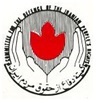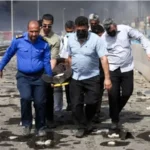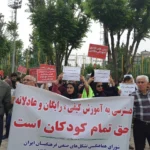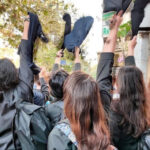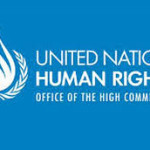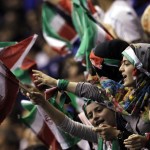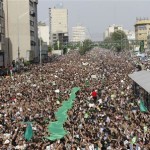
The daily minimum wage in Iran is set at a mere $4, at a time when the poverty line equates to 35,000,000 tomans ($583) per month.
- According to the latest report by the Majlis (Iranian Parliament) Research Centre, the poverty rate in Iran has increased from 19% to over 30% over the past decade.
- The number of people living below the absolute poverty line in Iran has doubled from 15% to 30% between 2018 and 2020.
- The number of workers living below the absolute poverty line has increased fivefold during the same period.
Before the early April spike in tensions in the Middle East involving Iran and Israel, as well as the rise in the dollar’s value, workers’ wages were already meagre and barely covered basic food expenses. However, with the sharp decline in the value of the national currency against the US dollar, the accompanying devaluation in workers’ wages has left their tables and shopping baskets empty.
Following lengthy negotiations without the presence of real worker representatives in the bargaining, the dailyminimum wage for workers for the year 1403 (2024-2025) has been set at 238,873 tomans, equating to around $4 (1 US dollar is exchanged in Iran for around 60,000 Iranian tomans). Many workers are employed on a daily rate and at this base wage. 239,000 tomans is not enough for a worker to survive… With this daily salary, one cannot even purchase 500g of red meat.
Following Iran’s military attack on Israel, the value of the national currency once again began to slide against the US dollar. By the late evening of 16 April, the price of the dollar on the free market reached around 670,000 rials. In these conditions, the aforementioned income of 238,000 tomans for day labourers is roughly equivalent to just $3.50.
According to the Iranian Labour News Agency (ILNA), quoting Alireza Khorrami, a “labour activist” and member of the Islamic Labour Council of Polyacryl Isfahan, the purchasing power of workers’ wages has reached the lowest level in the history of the country’s Supreme Labour Council. He called the workers’ income “barely enough to survive” and stated:
“Before the recent events and the rise of the dollar’s exchange rate, workers’ wages were already meagre and barely covered basic food expenses. Now, with the rise of the dollar exchange rate, the unprecedented decline in wages has emptied workers’ tables; there is nothing left in workers’ shopping baskets; we don’t know why every government that comes to power [in Iran] attacks workers’ empty dining tables.
“Specialist and experienced workers are usually covered by other wage levels, which have seen a 22% increase in their salaries this year. In this month of March alone, the prices of many goods and services have increased by more than 30%, and last year’s inflation was at least 50%. In fact, from the beginning of March 2023 to the end of March this year, we have had at least 70% to 80% inflation in the household basket. However, the wage increases for skilled workers in the country, who are the national capital and turn the wheels of the economy, has been only 22%. In this situation, are they still going to talk about strengthening families and having children, or criticise why skilled workers remain single and are forced to migrate? A skilled worker can earn more than $3 or $4 a day in any country he migrates to!” Khorrami continued.
A regime wedded to neoliberal economic policies
According to Khorrami, since the early 1990s, the successive economic shocks have deprived workers of the security of housing and homeownership. “Homeownership” has been a dream for years, and now even buying a simple car is a dream for workers. “Owning a Pride [model of car popular in Iran]” is a dream that cannot be easily achieved by working and sweating.
The Ministry of Labour approved the 2024 salaries in the last days of March 2024, but the details were not announced. Even the government-controlled workers’ representatives in the negotiations did not sign the minutes of the Supreme Labour Council meeting and insisted that workers’ salaries should be set higher than the announced amount. However, since the signature of the government and employer representative and the approval of the Minister of Labour were sufficient to make the salary and wage decision official, the Ministry of Labour then announced it as effective from the beginning of Nowruz, the Iranian New Year.
The base monthly salary of workers in 2024 has increased from 5,485,226 tomans to 7,405,568 tomans ($124). The base salary of workers is included in the pay slip as the sum of the base wage in labour contracts, but this is not actually the final amount received by the worker.
Poverty in Iran: A Grim Reality
A former head of the Social Security Research Centre has painted a bleak picture of the growing poverty in Iran, stating that the amount of the population living below the poverty line has doubled while the number of workers below that line has increased fivefold, based on official statistics.
In March 2024, a respected economist, Farshad Momeni, stated that 30% of Iran’s population lives below the poverty line, with another 40% at risk of falling into poverty due to inadequate policies regarding the real purchasing power of wages.
“Combating poverty” has been a slogan of the Islamic Republic since 1988 (pursuant to the regime’s shift towards a free-market economy and its embrace of neoliberalism), but experts argue that the regime’s economic policies have actually exacerbated the problem.
Former President Ebrahim Raisi, who died in a helicopter crash in May 2024, had pledged to eradicate absolute poverty by the end of 2022. Yet these promises were empty, and the poverty rate remains sky high, with one-third of the population living below the absolute poverty line according to a 2023 report by the daily Tejarat newspaper.
All available statistics reinforce the grim picture of an escalating poverty crisis in Iran and underscores the need for effective and sustainable solutions for its alleviation.
The available information, corroborated even in reports by government officials, emphasises the ever-worsening of poverty in Iran despite government claims that it is all under control. This only serves to highlight the complete disconnect between empty government mantras and the lived realities of Iranians struggling in grinding poverty.
The number of workers living below the absolute poverty line has increased fivefold during the same period.
• Poverty is no longer confined to the unemployed; it is now affecting those who have jobs as well.
• Associated social problems such as narcotics addiction and abuse, as well as a sharp rise in the spread of diseases such as hepatitis and HIV, are increasingly afflicting workers in Iran.
• In Iranian cities, males aged between 20 to 30 years old account for the highest suicide rate among all demographic groups.
• Most analysts and experts believe that the economic policies of the Islamic Republic have directly resulted in the drastic acceleration and worsening of poverty in Iran.
• Former President Ebrahim Raisi promised to eradicate absolute poverty by the end of 2021, but the problem still persists and is becoming worse.


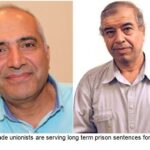
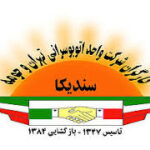


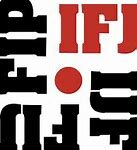




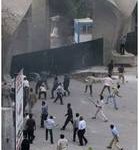
 Posted in
Posted in 